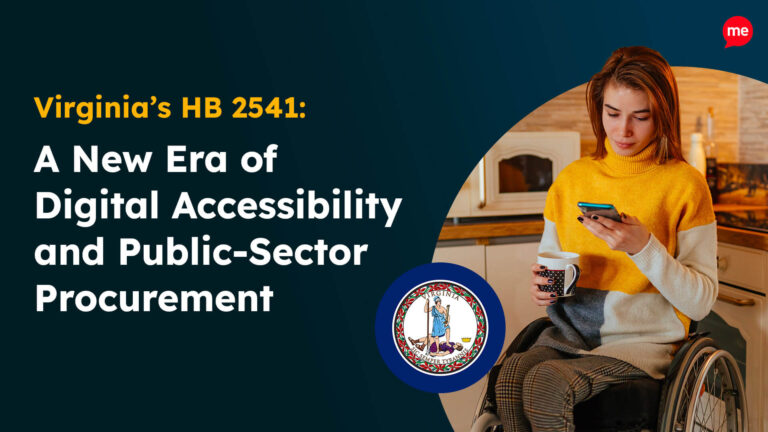Get Your Free Accessibility & Inclusion Toolkit
Download NowAround 8 million Canadians over the age of 15 have a disability. That’s 27% of the population. So, website accessibility laws are not something that Canadian organizations can afford to ignore. If your website is not disability-friendly, you could be missing out on a huge user base. That’s without considering the moral and legal implications, which could set back your business reputation and finances.
Canada has several federal and provincial laws to enforce digital accessibility across websites, mobile and desktop applications, and other platforms. Not sure which applies to your company? In this guide, we will take you through everything you need to know.
What do Federal Canadian laws mandate for website accessibility?
Back in 2019, Accessibility Standards Canada was established to develop national accessibility standards for federal organizations and federally-regulated companies, whether public or private.
Accessible Canada Act (ACA)
Also known as the Bill C-81, the Accessible Canada Act (ACA) was passed back in June 2019. As it sounds, this piece of legislation is focused on improving accessibility for Canadians with disabilities. It applies across a diverse range of areas, including transportation, the built environment, employment, service design and delivery, and ICT.
It specifically applies to federal organizations, such as:
- Canadian government departments and agencies
- Federally-regulated private sector entities, including banks, airlines and railways, and broadcasters
- Canadian Forces
- Royal Canadian Mounted Police
It can also apply to parliamentary entities, such as the House of Commons, but with a more tailored approach.

The law requires federal entities to take a proactive approach to identifying and eliminating accessibility barriers, as well as taking preventative measures to prevent discrimination in new services and policies.
It also establishes an Accessibility Commissioner to enforce compliance, promote accessible practice, and impose penalties, wherever required. Penalties for non-compliance can include fines of up to $250,000.
What are the planning and reporting requirements for the ACA?
As mentioned, for digital compliance, your business will need to meet the WCAG 2.1 Level AA standards. But there are also specific requirements for accessibility planning and reporting as part of the ACA. These require relevant organizations to create:
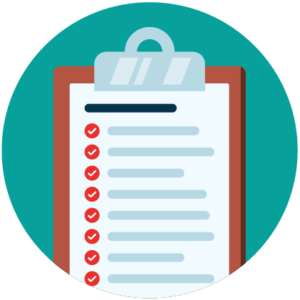
- Accessibility plans: Companies must develop and publish clear plans delineating how they will identify, remove, and prevent accessibility barriers within the priority areas. These will need to be updated in line with regulations (or every 3 years), and involve the consultation of disabled people through the process.
- Feedback process: Your business must have a process for receiving and responding to accessibility-related feedback.
- Progress reports: You’ll also need to prepare and publish regular progress reports that set out how the company has implemented its accessibility plan, with information on the feedback you’ve received and how this has been addressed. Again, you should also consult with disabled people through the report preparation process.
Get a free automated accessibility check of your websites homepage. This will identify and highlight any compliance issues on your website. Followed by recommendations on how to implement the necessary changes to make your website more accessible.
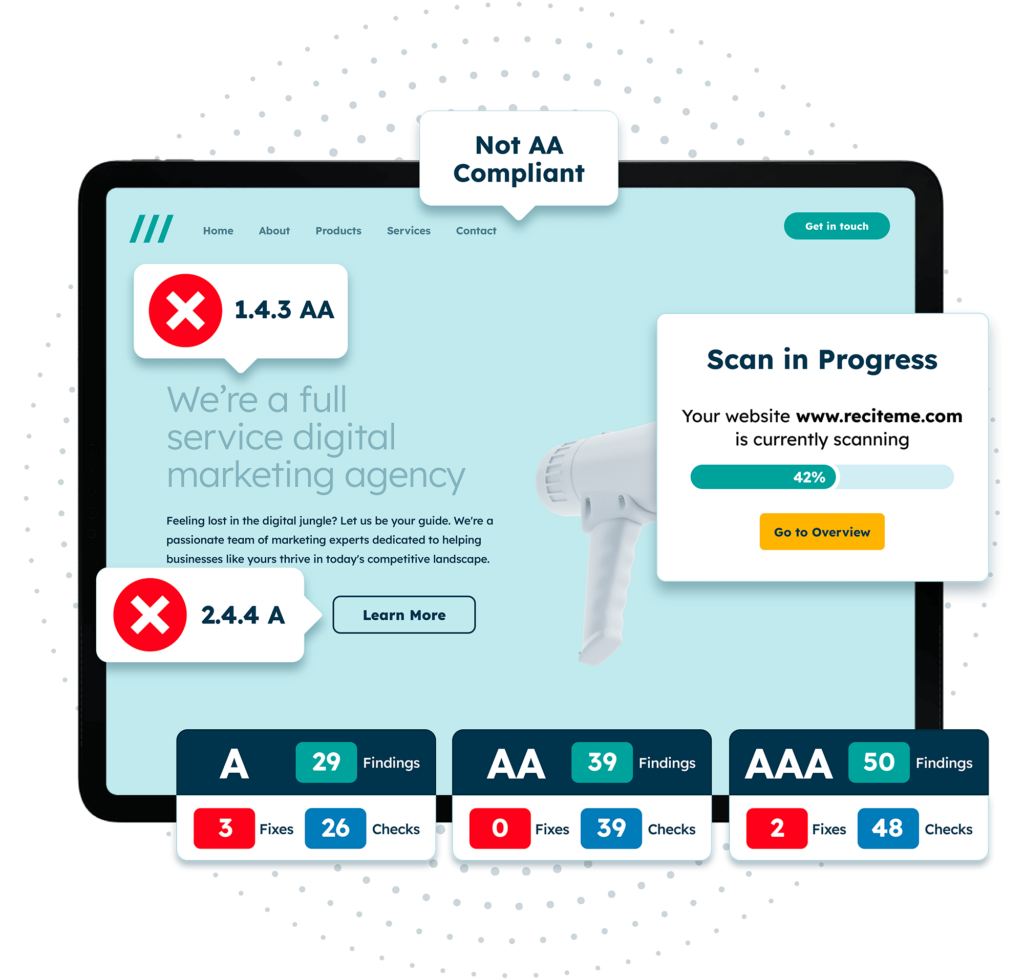
The role of provincial and territorial regulations in Canada
Aside from the federal legislation, you should also be aware of provincial accessibility regulations that may apply to your business, depending on its location.
Ontario: Accessibility for Ontarians with Disabilities Act (AODA)
Established in 2005, the AODA is a set of physical and digital accessibility standards applicable to public, private, and non-profit entities operating in Ontario, Canada. Keep in mind that AODA is applicable to all public sector organizations, with specific requirements for private/non-profit companies with 50+ employees.

It has 5 key standards to follow for accessibility in important areas of public life, which are:
- Customer Service Standards
- Design of Public Spaces Standards
- Employment Standards
- Information and Communications Standards
- Transportation Standards
As with many other laws in this guide, it utilizes the global WCAG standards, particularly version 2.0 Level AA, for digital accessibility.
British Columbia: Accessible British Columbia Act (ABCA)
The Accessible British Columbia Act was first introduced in 2021, and applies to several entities, including educational institutions, schools and school districts, health authorities, municipalities, and other public-sector companies. However, this could potentially expand into other sectors.
Requirements include:
- Accessibility committee: A committee must be established to identify and remove existing barriers, and prevent future barriers. There are additional guidelines for the membership of these committees, including ensuring that at least half of the members have disabilities or support people with disabilities, wherever possible.
- Accessibility plan: Similar to the ACA, you’ll also be required to develop an accessibility plan, which should be updated every three years (at a minimum).
- Accessibility feedback: Again, your organization should also have a clear process in place for the public to report accessibility feedback.
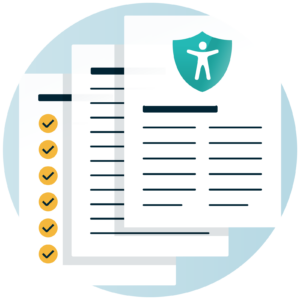
Non-compliance with ABCA can cost you up to $250,000 in fines, so it’s essential for relevant organizations to meet these requirements.
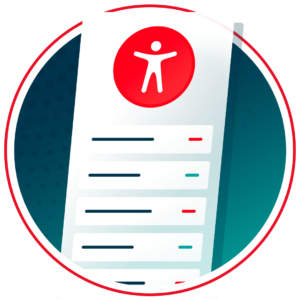
Manitoba: The Accessibility for Manitobans Act (AMA)
First established in 2013, the Accessibility for Manitobans Act (AMA) aims to improve accessibility in Manitoba. Similar to AODA, its five core accessibility standards cover a wide range of areas, such as regulations for employment, customer service, and information and communication (including digital communications). The AMA incorporates WCAG 2.1 Level AA as a requirement for companies across the public and private sectors.
Newfoundland & Labrador: Accessibility Act
Introduced in 2021, this Act focuses on preventing discrimination by removing accessibility barriers. It applies to provincial public bodies, including government departments, health authorities, and schools. These public bodies must publish an Accessibility Plan within two years, developed with input from disabled people and advocacy groups.
To meet communication requirements, organisations must comply with WCAG 2.0 AA (excluding private and non-profits with under 50 employees).


Quebec: Charter of Human Rights and Freedoms
Quebec has no specific web accessibility law, but businesses must follow the Charter of Human Rights and Freedoms. Section 10 prohibits discrimination, including disability, meaning refusal to provide equal digital access could violate the Charter.
Organisations should aim for WCAG 2.1 Level AA compliance. Federal bodies, such as banks, telecoms, transport, and the public service, instead fall under the Canadian Human Rights Act.
Standards and guidelines commonly found in Canadian Accessibility Laws
The most common set of web accessibility standards used in Canadian accessibility laws are WCAG. This stands for Web Content Accessibility Guidelines, which is a consensus standard established by the World Wide Web Consortium (W3C). It contains clear guidelines for creating accessible websites, and is considered the gold-standard for digital accessibility.
WCAG is defined by four principles known by the acronym, “POUR”:
- Perceivable: This requires your website to be “visible” and “audible” to all users, regardless of their abilities. So, for example, visually impaired web users must be able to use their screen readers with your website, or it will not be perceivable to them.
- Operable: Similar to the principle above, your website should be operable by all, not just mouse users. For example, some may require keyboard-only navigation.
- Understandable: Your website and its content should be understandable for all web users. For example, that requires jargon-free language, indicative use of color, and clear error messages.
- Robust: WCAG-compliant websites must also be adaptable to future changes and developments. So, as new technologies are introduced, your website will still remain compatible, and therefore, accessible for all users.
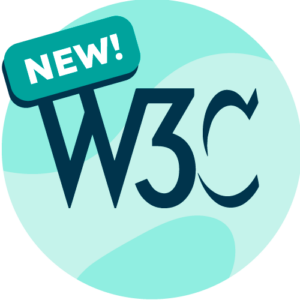
Are Canadian Accessibility laws enforceable?
The Canadian Human Rights Commission (CHRC) is empowered under the Accessible Canada Act (ACA) to investigate complaints of discrimination on the basis of disability in areas under federal jurisdiction. Individuals who believe a federally regulated organization has failed to meet its accessibility obligations may file a complaint with the CHRC. Upon receiving a complaint, the CHRC can:
- Conduct an inquiry and gather evidence.
- Attempt mediation between the parties.
- Refer matters to the Canadian Human Rights Tribunal if resolution is not achieved.

What fines does the ADA impose?
Under the Accessible Canada Regulations, violations of the ACA receive penalties depending on their severity level.
- Minor violations, such as not publishing an accessibility plan or progress reports, can result in widely varying penalties between $250 and $75,000.
- Serious violations, such as refusing to follow orders from the Accessibility Commissioner to provide requested records, can lead to fines between $2,500 and $150,000.
- For very serious violations, such as lying to the Accessibility Commissioner, your organization can receive fines between $6,250 and $250,000.
What fines do provincial laws impose?
Some of the provincial laws also provide specific guidelines for the fines that offending businesses may receive.
- AODA: For corporations, fines can reach up to $100,000 for each day the offense occurs.
- AMA: Individuals found to be non-compliant with this legislation face fines of up to $250,000. Keep in mind that where corporations are involved in an offense, any “director, officer, employee or agent” who authorized the offense in question is also considered guilty, regardless of corporate conviction.
- ABCA: Non-compliance with this law can lead to a penalty of up to $250,000.
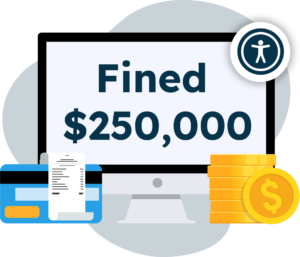
This is all without considering the additional costs that lawsuits incur, including for legal representation and the fallout of negative publicity.
Case study of a real accessibility lawsuit in Canada
Accessibility lawsuits are continuing to rise in Canada and across the world. Information on recent cases is limited, but one impactful lawsuit you may be familiar with was Jodhan v Canada (2010). This landmark case is considered one of the catalysts for the development of the Accessible Canada Act.

Legislation used: Section 15 of the Canadian Charter of Rights and Freedoms
Case description: Donna Jodhan filed against the Canadian government as she could not apply for a job on a Federal government job website. She argued that it was inaccessible for those with visual impairments.
Outcome: The court found the government had breached Section 15 of the Canadian Charter of Rights and Freedoms. They ordered the federal government to make their websites accessible to those with visual disabilities within 15 months.
Whilst it is unclear how much money the Canadian government was required to pay, the impact of this lawsuit can be seen through its effect on future legislation.
Best practices for making your website accessible and compliant
Improving your website accessibility doesn’t have to be difficult. There are several best practices you can put in place to quickly boost your digital compliance.
Auditing your website and implementing change
If you’re not sure about which compliance issues are affecting your website, it can help to conduct an audit with a free web accessibility checker. This tool can analyse various aspects of your website, from webpages to images and PDFs, for WCAG compliance.
The tool provides detailed information about any fixes you’ll need to make, with some AI-powered fixes you can quickly implement. It will also compile the fixes into a prioritized queue, so you can target the most important issues first, such as poor color contrast.
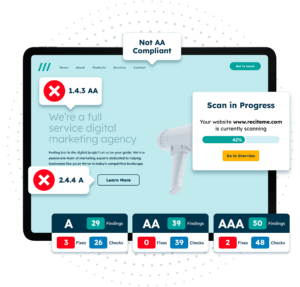

Provide accessibility training to employees
Accessibility is a continuous practice, and one-off changes are only part of the solution. To improve web accessibility for the long haul, your team will require training. This ensures they have full awareness of digital accessibility practice and law.
Whilst you might feel daunted by the expense of training, you’ll find it’s much more affordable than you’re expecting. In fact, our free web accessibility training over 9 detailed sessions. Staff can work on them at their own pace, and the core fundamentals of web accessibility are all covered, including key regulations and WCAG standards.
Showcasing your accessibility with documentation
Another great way to improve your accessibility compliance and display your commitment to inclusivity is through accessibility documentation. These documents showcase your accessibility practices and policies, and include:
- Accessibility Statement: As it sounds, you can display this on your website to highlight your accessibility practices, including the steps you’ve taken to create an accessible website, along with your key standards.
- Accessibility Policy: You can use this to go into more detail about your commitment to accessibility, including your goals for improving accessibility and any ongoing developments.
- VPAT Template: This is a report that you can use to outline how your services or products meet accessibility standards.
Recite Me offers free templates for all three forms of website accessibility documentation.
Our 40-page Digital Accessibility & Inclusion Toolkit helps businesses break down online barriers and make a real impact. It offers practical advice on all aspects of digital accessibility, from writing an accessibility statement to accessible website tips and inclusive hiring.
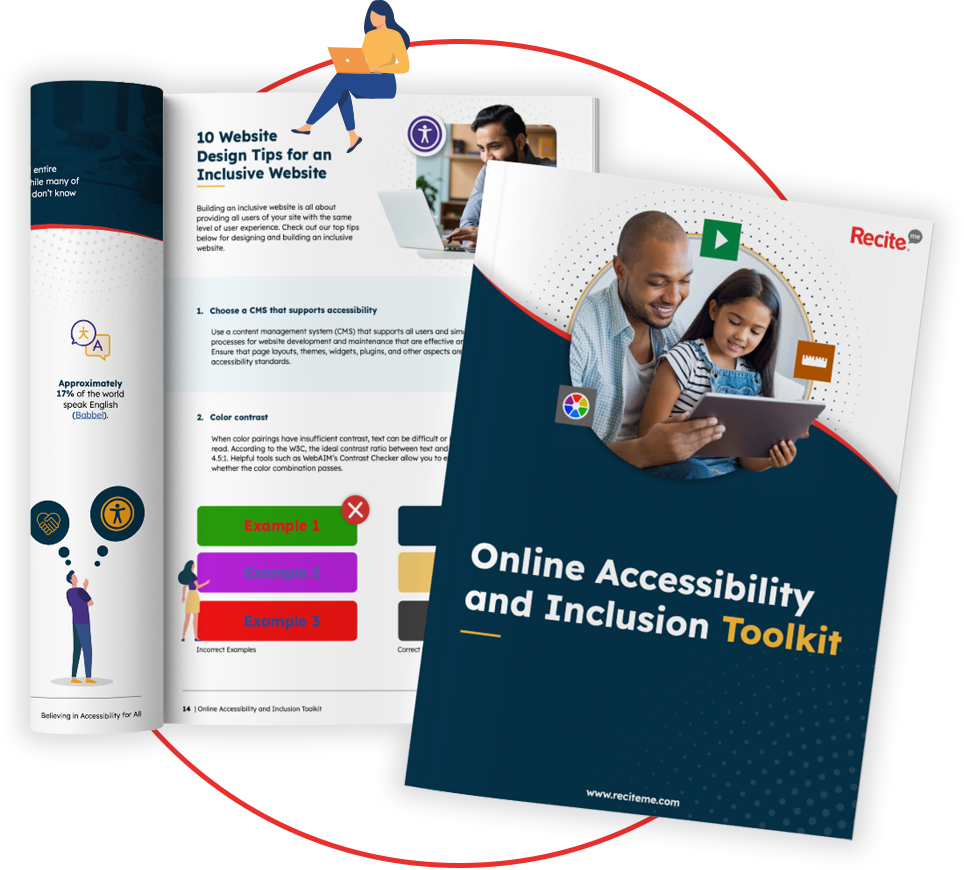
The summary: Work towards accessibility compliance in Canada today
Canada has a variety of robust accessibility laws, which also cover web accessibility. Ensuring that websites and applications are inclusive is just good business sense. Most importantly, though, it builds an accessible internet for all disabled Canadians.
Digital inclusivity isn’t something your company can afford to ignore. And it doesn’t have to be difficult to start. If you’re still feeling confused by the legislation, web accessibility training can put you on the right track. Or, for a more tailored approach, our experienced digital accessibility consultants can advise you.
Accessibility legislation in Canada FAQs
Looking for a recap or quick summary? Here are a few of our most frequently asked questions to help you get to grips with the essentials:
What are the applicable accessibility legislations in Canada?
This will depend on your business type and location. For example, the Accessible Canada Act (ACA) is aimed specifically at federal organizations, including federally-regulated private sector entities.
There are also provincial laws, such as the Accessibility for Ontarians with Disabilities Act (AODA) and the Accessibility for Manitobans Act (AMA).
Is WCAG 2.1 a legal requirement in Canada?
This depends on your business type and location. However, WCAG 2.1 is often required for Canadian organizations. For example, it is a requirement for government websites and web apps under the Canadian Standard on Web Accessibility. Meanwhile, the Accessibility for Ontarians with Disabilities Act requires 2.0 Level AA.
Is ADA compliance mandatory in Canada?
No, the ADA, which stands for Americans with Disabilities Act, only applies to the United States. So, it is absolutely not mandatory in Canada. However, Canada has its own accessibility laws which your company will need to abide by, particularly the Accessible Canada Act (ACA).

